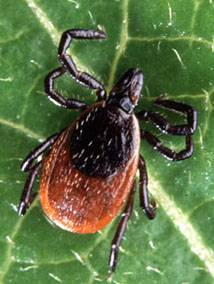Did You Know?
Minnesota Ticks Carry More Than Just Lyme Disease
For a long time, when you thought about ticks, you probably thought only of Lyme disease. Unfortunately, changes in climate and terrain have introduced new tick species—and with them, new diseases. The good news is there are many preventative measures you can take to protect your pets.

Minnesota is home to about a dozen different tick species. Fortunately, only three of those are known to carry disease. The American dog tick, commonly called the wood tick, is the most common species in our state. This tick can transmit Rocky Mountain spotted fever and tularemia—though it’s rare to find one that actually carries these diseases.
Next, we have the blacklegged tick, better known as the deer tick. This is the species most people associate with tick-borne illness, as it spreads both Lyme disease and anaplasmosis. Finally, Minnesota is also home to the Lone Star tick, which can transmit tularemia and ehrlichiosis. These persistent parasites can cause serious illness in both pets and people, making prevention especially important.
Ticks live, on average, two to three years. They must feed on blood to survive. In their first year, they prefer smaller mammals such as rodents or birds—often picking up disease-causing organisms that make them infectious for life. As they mature, they move on to larger mammals like pets, deer, and humans. A tick typically feeds for three to five days on a single host, but it can transmit disease in as little as 24 hours. Once full, it drops off and searches for its next host.
In Minnesota, ticks are most active from early spring through late fall. Even during winter, if temperatures rise above freezing or snow cover is light, ticks may still be active and searching for hosts. Before the first snowfall, female ticks lay hundreds to thousands of eggs, preparing the next generation for spring.
At ZimmVet, we see tick-borne diseases every day—whether as an incidental finding on annual lab screenings or in patients showing symptoms. We routinely diagnose Lyme disease, ehrlichiosis, and anaplasmosis. Symptoms can vary widely and may include muscle or joint pain (causing limping, stiffness, or lethargy), loss of appetite, high fever, and even bleeding disorders. Once the disease enters the body, it begins attacking your pet from the inside out.
Treatment depends on the severity of infection. Some pets require hospitalization with IV fluids, antibiotics, and round-the-clock veterinary care. Others can recover at home with prescribed medications and rest. Regardless, these diseases are painful, can be costly to treat, and are far easier to prevent than to cure.

Thankfully, prevention is simple. At ZimmVet, we carry Simparica Trio®, a once-monthly oral medication proven to prevent heartworm, intestinal parasites, fleas, ticks, and Lyme disease transmission. When paired with the annual Lyme vaccine, your pet has excellent protection against tick-borne infections.
Year-round prevention is the best way to keep your pet safe. With consistent protection, your pet won’t be an easy target for the next hungry tick!


